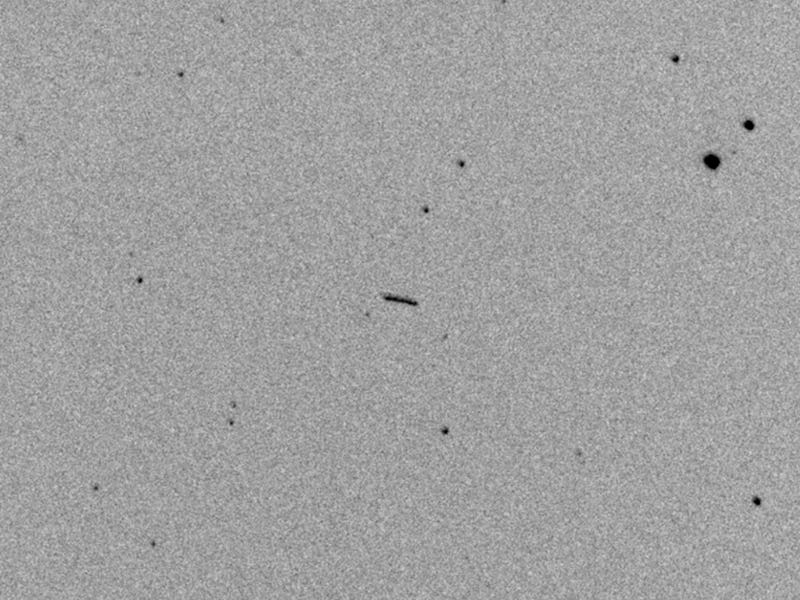Scientists discovered an asteroid hours before it hit Earth — the fifth time ever
Our planetary awareness is getting a little sharper.

The Earth’s surface is pockmarked with 200 or so craters — typically, these scars were made many millennia ago by asteroids and other space rocks that smacked into our planet. Some of these collisions, we know, were catastrophic. Who can forget that an asteroid triggered the end of the dinosaur era 66 million years ago? If another large body hit Earth today — what then?
The fact that these rocks can cause such cataclysms is part of the motivation for space agencies everywhere to monitor the space around Earth for incoming missiles from the cosmos. (This search — and everything it finds — also makes for some compelling metaphors in news headlines — Empire State Building-sized asteroids seem to be everywhere.)
Now the European Space Agency reveals it managed to catch an asteroid on a collision course with Earth before it actually hit — the fifth time this has even been achieved. Typically, scientists discover asteroid strikes through their ruins and relics, long after impact.
The discovery — On March 11, 2022, Hungarian astronomer and self-described asteroid hunter Krisztián Sárneczky spotted an object whizzing through Earth’s sky using a telescope stationed on a mountain in Hungary which is part of the country’s Konkoly Observatory. In just minutes, according to the ESA, he had reported the sighting to the Minor Planet Center — part of the International Astronomical Union. The word spread fast.
As Sárnecsky himself writes in a post on Hungarian site Csillagaszat, he thought initially the object was likely manmade:
[I thought it] must be some man-made device, a rocket stage on a not-too-distant, eccentric orbit, they can show such a change in their own motion in such a short time. Immediately after that, however, an incredible fragment of thought appeared in my head: could it be a fast-approaching asteroid?
At that point, based on Sárnecsky’s initial series of observations, the chance of impact on Earth was estimated at less than one percent. The guess, it soon transpired, was 99 percent off the mark.
An hour after the object was first spotted, the ESA’s impact-warning system, Meerkat, set alarm bells ringing. Based on Sárneczky’s continued observations of the fast-moving object and other data, there was a 100 percent chance of a collision with Earth. At approximately 8:30 p.m. Universal time, the ESA’s system discerned there was less than an hour remaining till impact.
Thankfully, the impact did not create a fresh climate crisis as the asteroid that created the largest known crater on Earth, Chixculub, did 66 million years ago. The reason why has a lot to do with size — and perhaps, a little luck.
“I’ve dreamed of such a discovery many times before, but I really never believed in it,” writes Sárnecsky.
One amateur astronomer, Tony Dunn, posted an animation of the asteroid’s path to Earth on Twitter following the discovery.
The details — The object, dubbed 2022 EB5, is thought to have been between one and three meters in diameter, astronomers at ESA believe — this small size means Sárneczky was exceedingly lucky to have spotted it at all. The feat of observation is made particularly more impressive considering how fast it was moving and how close it was to Earth by the time the astronomical community knew about it.
This image shows the object’s trajectory on the ESA’s Meerkat system from initial observation to impact.
But while it was mere meters in diameter, according to the ESA and independent monitoring systems in the seas near Iceland and Greenland, the asteroid splashed down in the Arctic waters with a force equivalent to as much as 3 kilotons of TNT. For comparison’s sake, the nuclear bomb dropped on Hiroshima had an equivalent force to 13 kilotons of TNT.
As Sárnesky writes in his blog post, if a larger asteroid were discovered within the same timeframe it would pose a far greater danger to Earth:
“Compared to the very short time it took to issue an alarm (the previous four similar cases had 8-21 hours between discovery and impact), the system works quite well, although for a larger and more dangerous celestial body, this time is not sufficient to inform the public. However, a larger celestial body could be discovered earlier, so there would be time for a broader warning as well.”
Ultimately the force of this asteroid impact was absorbed by the sea and caused no damage, but if it had been on a trajectory to hit a populated area of the world, this could have been a very different story.